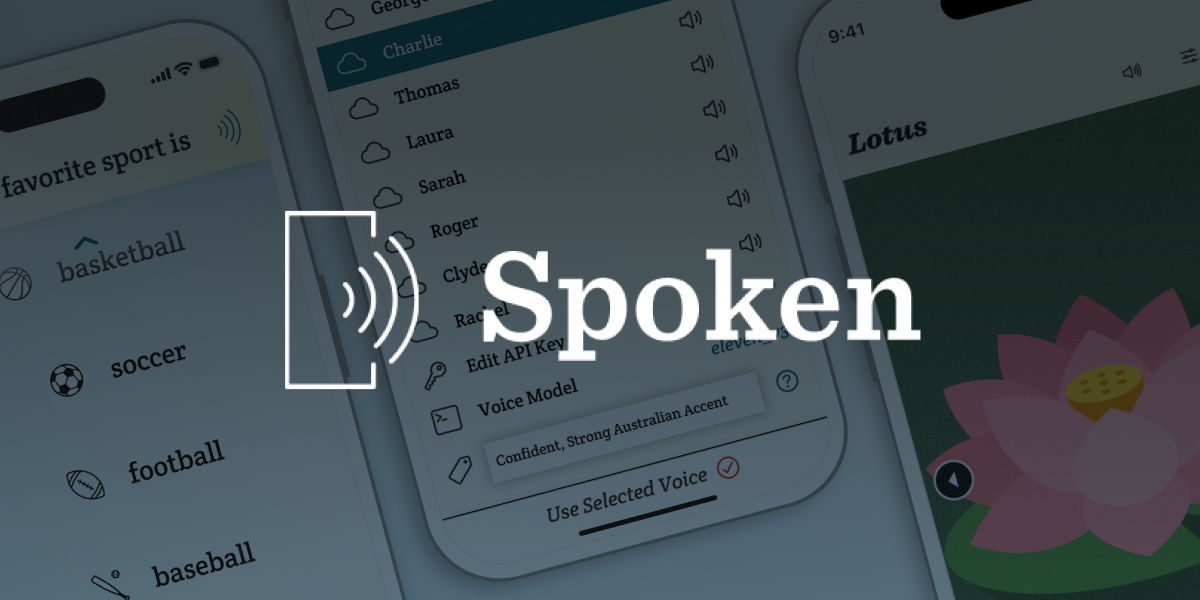Proper AAC Etiquette: How To Communicate Respectfully with AAC Users

In honor of AAC Awareness Month, we’re diving into the crucial topic of communication etiquette when interacting with someone who uses Augmentative and Alternative Communication (AAC). Although the pillars of respect and courtesy are universal, there are unique considerations to make when engaging with an AAC user. This guide aims to explain these subtle yet significant aspects of communication etiquette to create an environment of inclusion and respect for everyone, regardless of their method of communication.
Give Them Time and Avoid Unnecessary Interruptions
One of the most important points to remember when talking with someone who uses AAC is that constructing messages may require a bit more time compared to verbal conversations. This extra time can be spent navigating menus, typing words, or framing thoughts in a way that is compatible with the device’s capabilities. It is imperative to exhibit patience in allowing them to complete their thoughts. Interjecting while an AAC user is composing a message is rude, especially if it’s to complete their sentence. These actions not only disrupt the flow of the conversation but can also serve to disempower the AAC user by inadvertently taking control of their narrative. Allow the user ample time to complete their thoughts, and respect the spaces of silence that may arise during conversation. If you’re tempted to fill these gaps with your own words, remember that active listening often involves comfortable silence, allowing the other person to form and share their thoughts.
Address the AAC User Directly
It is common for people to mistakenly direct their questions or comments to a companion or caretaker of the AAC user rather than the AAC user themselves. Always engage the person who uses AAC directly in the conversation, just as you would with anyone else. Speaking to the companion instead is both marginalizing and disrespectful. In cases where the companion facilitates certain parts of the conversation, it should still be clear that the primary interaction is with the AAC user.
Maintain Eye Contact and Show Engagement
In any dialogue, eye contact serves as a universal indicator of attentiveness. When communicating with someone who uses an AAC device, it might be tempting to focus on the screen or speakers, but maintaining eye contact with the individual is pivotal. It not only shows that you’re engaged but also helps to humanize the interaction, reminding both parties that the technology is merely a facilitator of conversation. Listening is vital in any meaningful conversation, more so in interactions where constructing responses might take longer than usual. Active listening involves more than just hearing the words being spoken (or generated, in this case); it involves showing visible cues of engagement. Nodding, appropriate facial expressions, and verbal affirmations can all indicate that you are attentively participating in the conversation.
Respect Their Personal Space and Equipment
AAC devices are often highly personalized pieces of technology, tailored to the individual user’s needs and preferences. They are not only vital tools for communication but are also an extension of the user’s personal space. Therefore, it is paramount to treat these devices with the same respect you would give someone’s personal belongings. If you feel an inclination to assist—perhaps by holding the device to a better angle or navigating to a certain screen—always ask for explicit permission first. Unsolicited touching of someone’s device can be invasive and might even disrupt their settings. Asking for permission not only respects the user’s autonomy but also shows a thoughtful consideration for their personal space and belongings.
Treat Adults as Adults
AAC users, especially those who rely on synthesized voices, may sometimes be infantilized by those unfamiliar with AAC communication. This tendency not only robs them of their dignity but also contributes to a skewed power dynamic in the interaction. Always approach individuals based on their actual age and maturity level, irrespective of the nature of their communication aid.
Speak in a Natural Tone
Adjusting your speaking style unnecessarily—such as talking louder or slower—can inadvertently come across as patronizing. Unless prompted by the AAC user, maintain your natural tone and conversational pace. This preserves the dignity of the interaction and makes for a more comfortable and respectful conversation for all involved.
Conclusion
As we commemorate AAC Awareness Month, let’s all make a conscious effort to foster inclusive and respectful environments. Keep in mind that these guidelines serve as a starting point; individual preferences can vary, and it’s always good to be adaptive based on the unique needs and feedback of each person you communicate with. By incorporating these principles into your daily interactions, you help to create a world that is not only more aware of AAC but also more inclusive and respectful. Thank you for taking the time to educate yourself and happy AAC Awareness Month!
About Spoken
Spoken is an app that helps people with aphasia, nonverbal autism, and other speech and language disorders.


